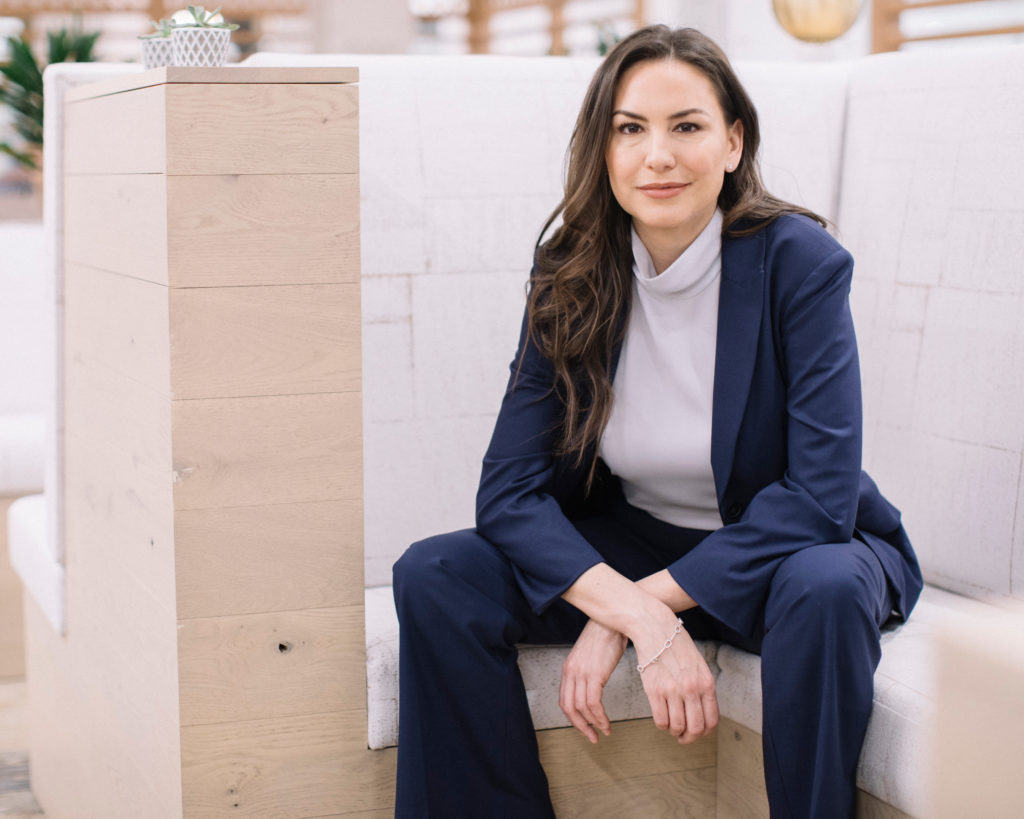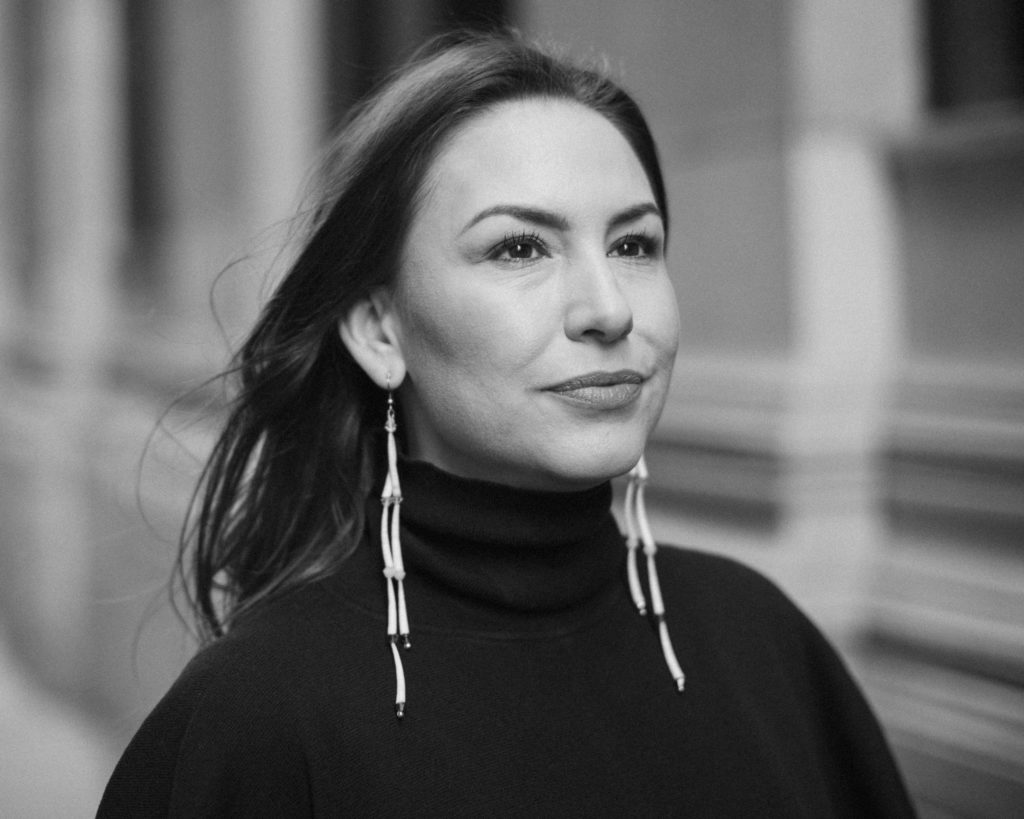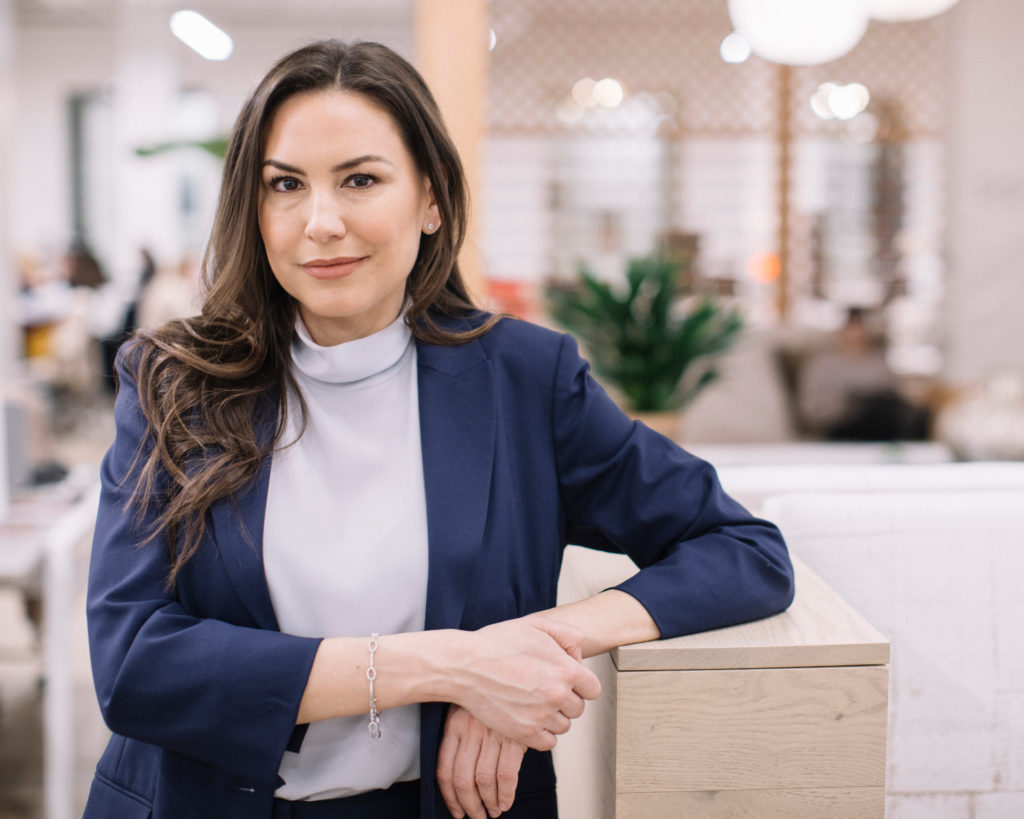Cherokee Actress Delanna Studi Redefines the Portrayal of Native Americans Onscreen
February 08, 2019 | Filed in: Woman of the Week
Delanna Studi was 22 when she moved from her Cherokee community in Oklahoma to Los Angeles to pursue acting. As she found success in film and theater, she also became an activist for Native Americans, protesting their often historically inaccurate portrayals in contemporary American culture. In recent years, she wrote and performed a one-woman play, And So We Walked, about a 900-mile journey she took with her Cherokee father to retrace the Trail of Tears. Now, she has taken on the role of the late Wilma Mankiller, the first woman elected to serve as Principal Chief of the Cherokee Nation, in Gloria: A Life, an off-Broadway show about Gloria Steinem. Here, she looks back at how she made her way in Hollywood, found her voice as a social activist, and—last but not least—landed an appearance in a 1997 Smashing Pumpkins music video.
I GREW UP IN THE MIDDLE OF NOWHERE, OKLAHOMA. My father is Cherokee, and Cherokee people are matrilineal, so I was reared to feel that I could do anything I wanted. I didn’t learn about gender roles until I moved to Los Angeles. When someone said, “Oh, that’s men’s work, and that’s women’s work,” I was like, “What?”
LOOKING BACK ON MY CHILDHOOD, my family was poor, but it didn’t feel that way at the time. We were poor financially, but so rich in other areas. We lived on 30 acres of land and my parents would take us out in the woods and teach us about nature and self-reliance. On weekends, I would either go to church with my mother, who was Christian, or to Cherokee ceremony with my father. I lived between two worlds, in a way.

Delanna wears the Brady shawl and the Matte Satin belt.
WHEN I WAS FIVE OR SIX, my grade-school teacher talked about the first Thanksgiving with the Pilgrims and the Indians. I raised my hand and said, “I’m an Indian.” I was so proud to share that with the class. And my teacher said, “Oh, no, honey, Indians are extinct.” I didn’t know what that word meant, so I went home and told my father. He said it meant something that once was alive but is longer here, like the dinosaurs. And I burst into tears. That’s when he said this line and made me repeat it: “I’m Cherokee and I’m proud.” And he told me to say it again and again. It was my first taste of social activism and what it means to be an advocate. My father was so angry about what happened that he ran for the school board, got elected, and then changed the curriculum. There’s a lot of ignorance in this country, but I think most people have good intentions—they don’t realize they’re being hurtful.
I WANTED TO BE AN ARCHITECT, so I went to school for engineering. Then I switched to theater. A professor of mine said that I should go to Los Angeles if I wanted to be an actor. There were not many young Cherokee women from Oklahoma going to Los Angeles to become actors, and it was not rational or practical. But my father always told me that at the end of your life, you will look back and either regret or respect your decisions. And so I knew that if I didn’t try the acting thing out, I would regret it.

Delanna wears the Carson blazer, the Lise top, the Clooney pant, and the Gaineswood bracelet.
MY FATHER IS VERY CHEROKEE IN THAT HE BELIEVES that if something is meant to happen and you put a little bit of energy into it, then doors will magically open. Still, he had rules. If I were going to be allowed to stay in Los Angeles, I had to accomplish five things in the first month, or else I had to come back home. The first was that I had to find an apartment in five days. It took two days to drive out there, so then I had three days to find a place, and I did. The other four things were 1) get a job, 2) take an acting class, 3) hold an Oscar, and 4) be in a Smashing Pumpkins video. I got to pick the last two, which is why they’re so crazy. My father said, ”Are those goals logical?” And I said, “They’re not any crazier than you expecting me to find an apartment in three days, using only the $300 I have in my checking account.” So I arrived in Los Angeles at 22 years old, not knowing a single person there. And I managed to accomplish those five things in a month so that I could stay.
THE MOST UNBELIEVABLE PART OF THAT STORY is how I got into a Smashing Pumpkins music video. It’s for a song called “Perfect,” and it happened so randomly that you wouldn’t believe it was real. My first week In L.A., I got a job as a hostess at a French bistro on Sunset Plaza Drive, and a few days later, the Smashing Pumpkins announced that they were doing a concert at Universal Studios. I desperately wanted to go, and when I left work the end of the day, my share of tips was $48.50. I got on a pay phone and asked the operator where I could buy a ticket—that’s how much of a country bumpkin I was. When I got to Warehouse Music, which was where you bought concert tickets in those days, the ticket cost $48.50. Can you believe it? So I went to the concert, and through a series of strange events, I connected with a security guard who connected me with Billy Corgan, the band’s lead singer. They were filming a video two weeks later, and I got to be in it. I was just a featured extra, and if you blink you’ll miss me. But I accomplished my goal.

Delanna wears the Ruth dress, the Broadway belt, the Cecilia earrings, and the Ginger pump.
WITHIN TWO YEARS, I was booked in an ABC Hallmark movie called DreamKeeper, and that was my first big role. I also got to go on the press tour for that movie, which opened a lot of doors for me. Then I did a movie called Edge of America, about a Native American girls’ basketball team, and that opened even more doors.
THE BEST PIECE OF ADVICE ABOUT ACTING that I ever got was from my uncle Wes, who is also an actor. He told me that fame is like pixie dust. When you have it, enjoy it, but it’s going to slip through your fingers in no time. If you want to be an actor, it’s about the work, not the recognition. As I’ve gotten older, I’ve realized that’s probably the best thing to realize in any creative field.
I THINK A LOT ABOUT THE IMAGES I’m leaving for the next generation of Native people, and that sense of responsibility also changed the way I view my career. I consider myself an actor and an advocate, and I work on dispelling stereotypes about Native Americans in the movies all the time. It’s usually little things, like headdresses—people tend to think every Native American man wore a headdress all the time. But the truth is, those were ceremonial. Another thing is that people tend to talk about us in the past tense. I always say, “Use the present tense. We’re still here. We’re in this room. We’re thriving.” There’s also a tendency to portray Natives as highly exoticized, all-knowing creatures. Producers want to make something that’s entertaining rather than historically accurate. My question is, How do you find a way to make it both?

Delanna wears the Brady shawl.
IN MANY CASES, I’M THE ONLY NATIVE PERSON IN THE ROOM. And when you are the only one, you become the ambassador for all things Native. I don’t have all that knowledge, but I try to be generous with the knowledge I do have. That has helped me find my voice. When I’m the only one the room, I can’t wait for someone to speak up for me. If I don’t speak up, no one else will. I have to make sure my words count and that I’m saying the right things. In some cases, I’m the only Native and the only woman in the room, so I want to honor both my culture and my gender. My father taught me that every time we stand up and speak, we’re never speaking by ourselves; our ancestors are right there with us. That’s always empowered me.
I AM TYPECAST ALL THE TIME. In every piece I’ve done, with the exception of General Hospital, I’ve been cast because I’m a Native actor and I’m playing a Native part. That’s true for a lot of our people—you only see us when we’re playing Native roles. I think many other minority groups have already reached the status where they can just play a human. We’re not quite there yet, and it’s frustrating. One day I would like to have a non-Native audition, where I get to go in and be the cop or the baker or the zany best friend on a sitcom. I would also like to play contemporary characters and not just ride a horse, live in a teepee, and wear buckskin. But at the same time, I have had wonderful roles. I get to do pieces that are mostly written by Natives or have Native consultants, and I’ve worked with amazing people.
RIGHT NOW, I’M DOING A PLAY IN NEW YORK called Gloria: A Life, which is about Gloria Steinem. It’s about sisterhood, and how empowered women empower each other. I play Chief Wilma Mankiller, who was Gloria Steinem’s mentor. It’s a dream come true. She was the first Democratically-elected chief of any federally-recognized tribe. Growing up, I knew Wilma; she was a cousin of mine. My grandma Lizzy is named after Wilma’s grandmother Lizzy. I remember going to powwows and she would be there and my dad and I would sit in her tent. She was soft and strong and the most beautiful person I had ever met. As a little girl, I thought, That’s who I want to be when I grow up.

Delanna wears the Carson blazer, the Lise top, the Clooney pant, and the Gaineswood bracelet.
ONE OF THE LAST TIMES I SAW WILMA before she passed was at an event in L.A. for her book of essays, called Every Day Is A Good Day. She was signing books and we caught up for a few minutes. I told her that I was an actor, and she said, “What’s your dream project?” And I said, “Well, I’m hoping one day I will get to play you.”
THE SHOW DEALS WITH A LOT OF POLITICAL ISSUES and the oppression of women, and it’s an emotional experience. During the second act, we create talking circles where people in the audience can share their stories. Sometimes they’re light-hearted, and sometimes people share traumatic events that happened to them. Creating space for those people and being present for them, it can weigh on you. It’s magical, but it requires a lot of self-care on my part. I start every show with a prayer, where I touch the floor. It’s about grounding myself, getting connected to the earth. It’s not religious, but it’s spiritual, more in the Cherokee tradition. And then, when I get home at night, I list all the things I’m grateful for. I find that tremendously helpful. I also take long baths and do a lot of reading and journaling.
TAKING MOMENTS FOR MYSELF IS IMPORTANT. But I also surround myself with a wonderful support system of like-minded people. If something hits me hard and I’m having trouble processing it, they can help me. Anytime I feel like I’m losing my sense of self, I just call home and my family reminds me of who I am. That reminds me of why I do this work.
Photographs by Rich Gilligan. Styling by Chris Walsh.





